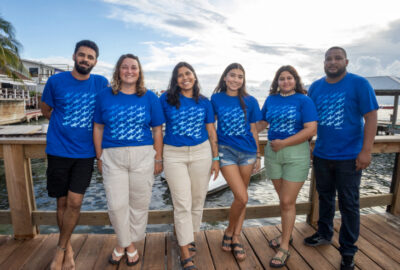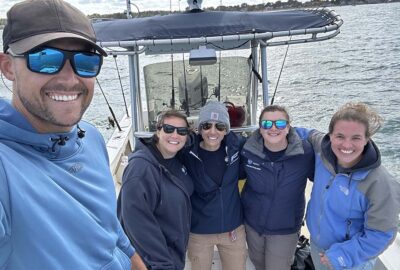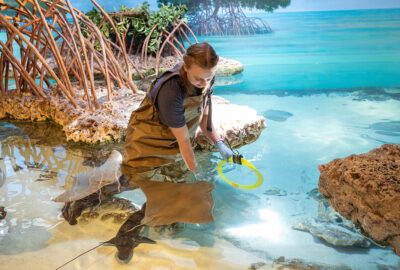Sandbar Sharks Around Nantucket: I Know What They Did Last Summer
By New England Aquarium on Friday, May 13, 2022


By Caroline Collatos
It’s July, and we are anchored right next to Great Point, Nantucket. The sun shines down on the fishing rods and water as we wait on the boat, eagerly anticipating and hoping for a shark to swim by and take our bait. Minutes seem like hours. Finally, after what seems like ages (even though it’s only been 25 minutes), the rod starts to bend and move. Could it be a shark munching on our bait on the other end? A couple more minutes of the fishing rod bouncing, then nothing. Three more minutes go by and still nothing. Impatient, I reel in the rod and check the bait. It’s gone. One clever fish stole it without taking the hook. So we rebait and throw the line back out. Another waiting game starts.
Then—zing!—the rod bends over, the line pulls out as a shark takes the dead bluefish chunk and swims off. Quickly one of us grabs the rod, I write down the time, grabbing my tagging gear and measuring tape, and the fishing excitement commences. After a hectic seven minutes of tug of war between fish and human, the shark is beside the boat. I start working to secure it so we can safely measure and tag it. As usual, there is some splashing in the process, but we secure the shark alongside our boat. I place the shark facing into the current so water is flowing through its gills, helping it stay healthy and get oxygen throughout the tagging process. I note the time again once the shark is secured beside the boat. Then, in a fast 2-3 minutes, we identify the species and sex, measure the shark from its nose to the fork in the tail, and I implant two tags—an external ID tag provided by NOAA and an electronic acoustic telemetry tag to track the shark’s movements. I note any abnormal or unique physical characteristics, and if I have the time, take a blood sample for future diet analysis. We have caught a male sandbar shark (a common species around Nantucket) who is almost five feet long, (4.7 feet to be exact). The shark has a scar near its stomach, an old wound that has been healed for some time, but shows his narrow escape from a previous predator. The team names him Captain Ahab. After tagging, we remove the hook, and release the shark, noting the time the animal is released. Feeling the animal swim out of your hands with their new tags, ready to contribute data for their species is the most satisfying part. Our first shark of the summer swims off with his new tags.
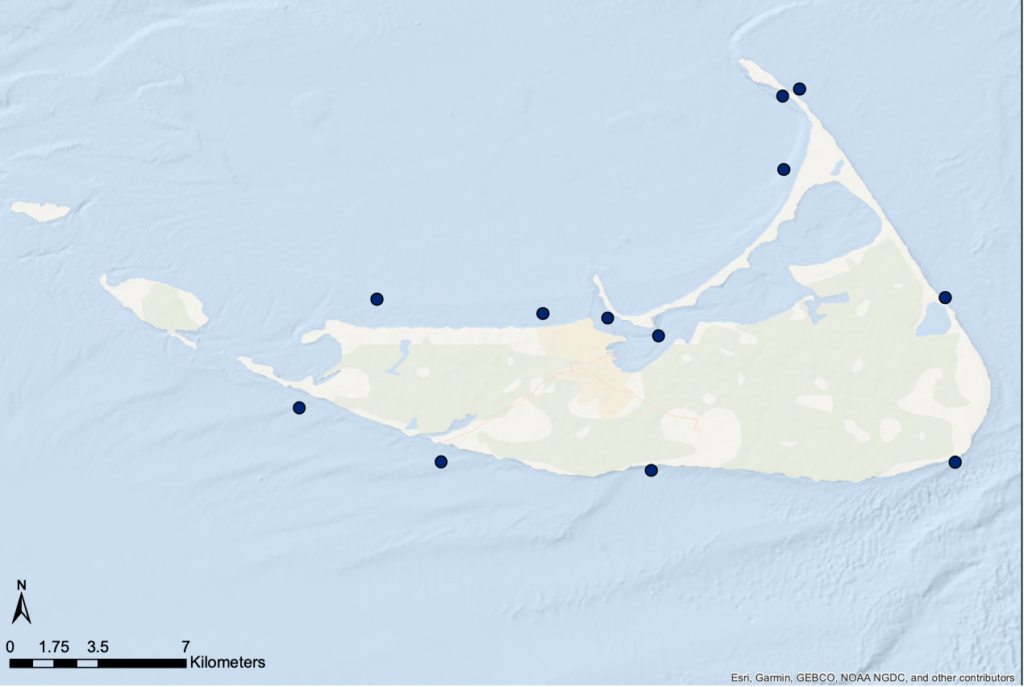
The two tags we placed on our sandbar shark are 1) a conventional ID tag marked with a unique identification number and project contact information for the NOAA Cooperative Shark Tagging Program, which will provide information on the shark’s movement if it is recaptured and reported (i.e. the location of tagging and release to the location of recapture), and 2) a battery powered acoustic transmitter tag (Figure 1). Acoustic transmitters are programmed to emit a series of pings that are detected by acoustic receivers in the area. When an animal swims within range, a receiver detects these pings and logs the specific transmitter ID, time, and date. With receivers deployed in different areas around the island, we can use these detections to gather information about sandbar shark presence, habitat use, and movements (Figures 2 & 3).
After four months of waiting, anticipating, and some worrying, we haul our acoustic receivers around the island. Like a kid on Christmas morning, I search through the data from all of our receivers to find the movements and tracks of the tagged sharks. I see Captain Ahab’s tag ID and start to track his movements. Looks like he was busy last summer! After we tagged him off Great Point on July 11, he was detected in the middle of Nantucket on August 4, and then returned to the island on August 10. He moved around the island from August 10 to 19 between the East and West side of Great Point, Quidnet, and Low Beach, with most of his activity between Quidnet and the East side of Great Point. So, it’s safe to say we know what he did last summer….well, at least for parts of it. But, since these acoustic tags last over 5 years, we can hopefully see what he does next summer, and the summer after, if he returns to our lovely island. Fingers crossed!
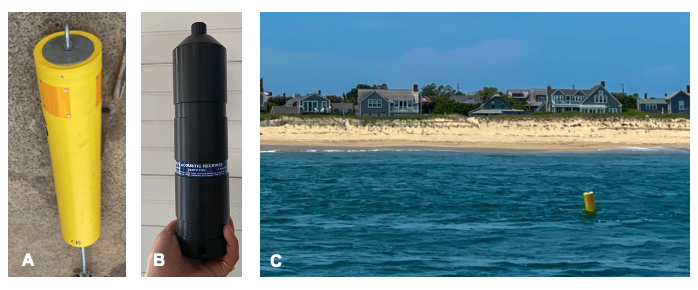
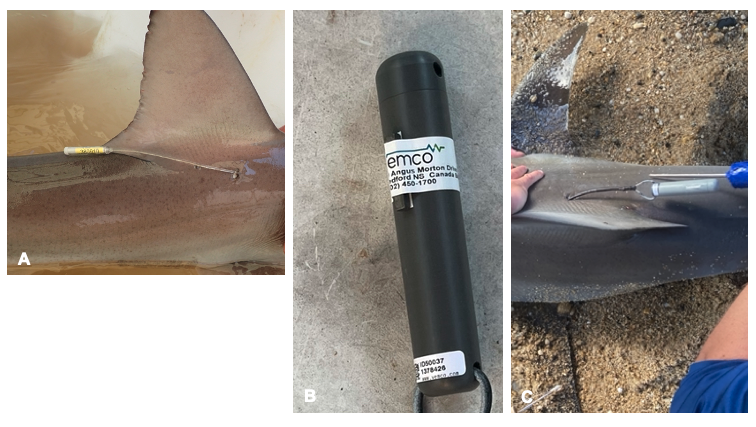
So far, we have put ID tags on a total of 67 sandbar sharks from Nantucket. These sharks ranged from 3.5–6 feet, and most were female (60%). We also tagged a subset of 12 sandbar sharks with acoustic transmitters. Of the 12 sandbar sharks we tagged with acoustic transmitters, 10 of these sharks were detected around our receiver buoy locations around the island from July to September.
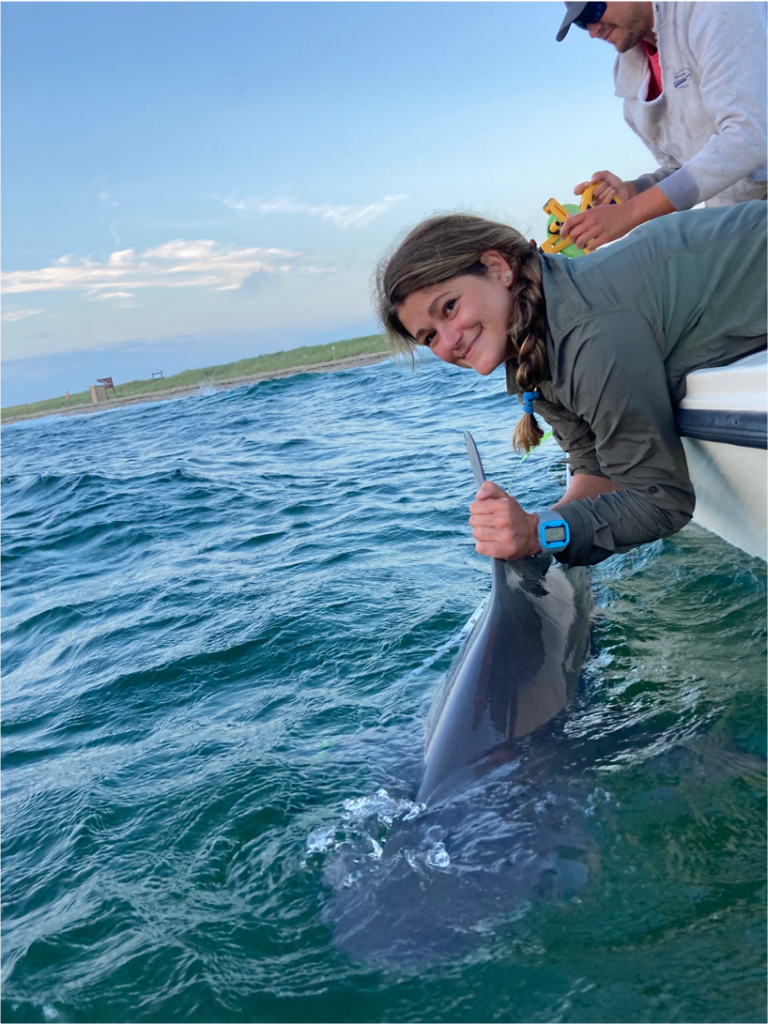 We plan to continue our acoustic receiver and transmitter deployments and tag and release sharks this upcoming summer to learn more about their presence and habitat use around Nantucket! Please remember: if you happen to catch a tagged fish (shark, striper, false albacore, etc.), please report the tag to the proper agency!
We plan to continue our acoustic receiver and transmitter deployments and tag and release sharks this upcoming summer to learn more about their presence and habitat use around Nantucket! Please remember: if you happen to catch a tagged fish (shark, striper, false albacore, etc.), please report the tag to the proper agency!
This work is being conducted in collaboration with the University of Massachusetts Boston, The Atlantic White Shark Conservancy, the Massachusetts Division of Marine Fisheries, and the Nantucket Land Council.

